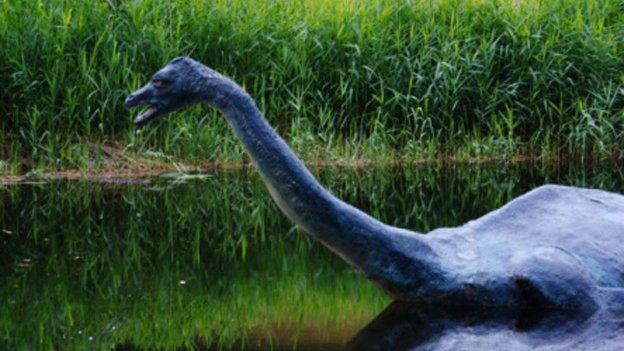Fallen branches 'could explain Loch Ness Monster sightings'
- Published
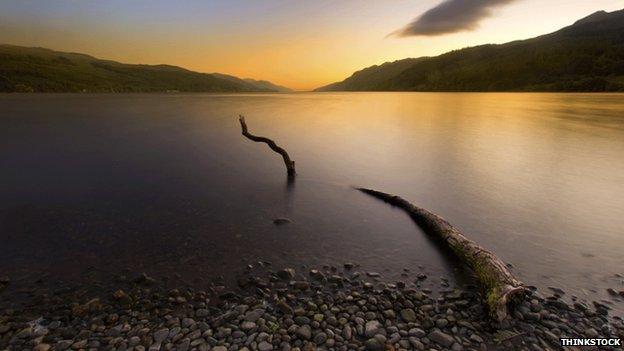
The Woodland Trust suggests fallen trees and branches are behind new Nessie sightings
Fallen trees and branches from a woodland could be a cause for recent sightings of the Loch Ness Monster, a conservation charity has suggested.
The Woodland Trust said deadfall washed out by rivers from Urquhart Bay Wood could explain a recent report of something emerging from the loch, external.
The trust said the lochside wood was a "Nessie spawning ground".
Previous explanations for the monster have included circus elephants being exercised in the waters.
Several reported sightings of Nessie have been made recently. Another image of an object in the loch, external was thought to be the wake of a boat.
Monster enthusiasts had earlier in the year been lamenting a lack of incidents.
Gary Campbell, who keeps a register of sightings, said in February that for the first time in almost 90 years no "confirmed sightings" had been made of the monster.
He said at the time no-one had come forward in 18 months to say they had seen the monster.

Bark worse than their bite?
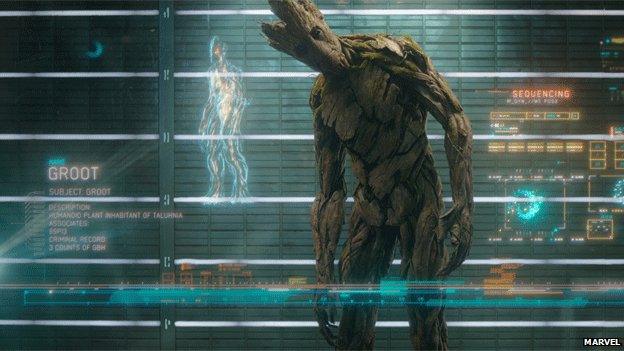
Being mistaken for tree has been no barrier to fame for other "monsters".
Groot, above, is one of Marvel Comics' forest of unusual characters.
A Flora colossus from Planet X, the capital of the branch worlds, Groot is one of Marvel's Guardians of the Galaxy portrayed in a series of comic book stories.
The character was among the most popular of a movie based on the stories released over the summer, and a clip of the creature dancing has been viewed almost three million times on YouTube, external.
Like Nessie, Groot has proved to be a goldmine in terms of merchandising with various toys created in his image.
Ents, giant woodland shepherds, appear in JRR Tolkien stories.
Film director Peter Jackson portrayed Ents as more tree-like than they appear in the books in his adaption of Tolkien's Lord of the Rings.

The Woodland Trust said Nessie spotters might be disappointed to learn debris from Urquhart Bay Wood, near Drumnadrochit and the famous Urquhart Castle, was a likely cause of at least one of the recent sightings.
A spokesman said: "Large amounts of wood flows out of the woodland through the two winding rivers that flow into Loch Ness each year, peaking when water is high in late autumn and spring.
"I think that some of that debris explains long thin - some stick-like - shapes seen."
The spokesman added: "Urquhart Bay is a really important wet woodland, made up of species such as ash, alder, rowan and willow.
"It's one of very few intact floodplain woodlands remaining in the UK and has European importance. Challenges such as flooding, movement of the rivers and accumulation of woody debris make it an interesting place to manage."
Large fish
Known locally as The Cover, the wood was once part of the Glen Urquhart Estate. Originally the woodland was granted to the Earls of Seaforth by King James IV in 1509.
The wood is situated on a flat low-lying area of alluvial sand and gravel deposits between the deltas of the Rivers Coiltie and Enrick where they flow into Loch Ness.
Alder and ash are the main tree species but there are also bird cherry and hazel and small numbers of wych elm, gean, holly, rowan and elder.
The Woodland Trust manages 56 acres (23 hectares) of woodland at Urquhart Bay.
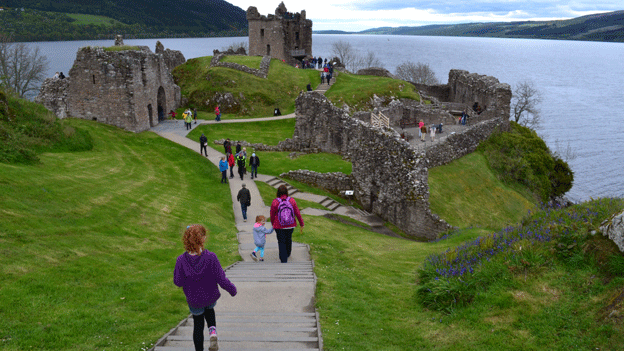
The woods are on land near Drumnadrochit and the famous ruins of Urquhart Castle
Wakes created by boats, otters and large fish called sturgeon have previously been offered as explanations for reports of the Loch Ness Monster.
Neil Clark, curator of palaeontology at Glasgow University's Hunterian Museum, spent two years researching Nessie.
He said past sightings of the beast could have been circus elephants, as fairs visiting Inverness would often stop on the banks of Loch Ness to give the animals a rest.
The trunk and humps in the water would bear similarities to some of the most famous Nessie photographs.
There have been reported sightings of "something" in Loch Ness dating back to the 6th Century and it has grown into one of the world's most enduring myths.
- Published23 April 2014
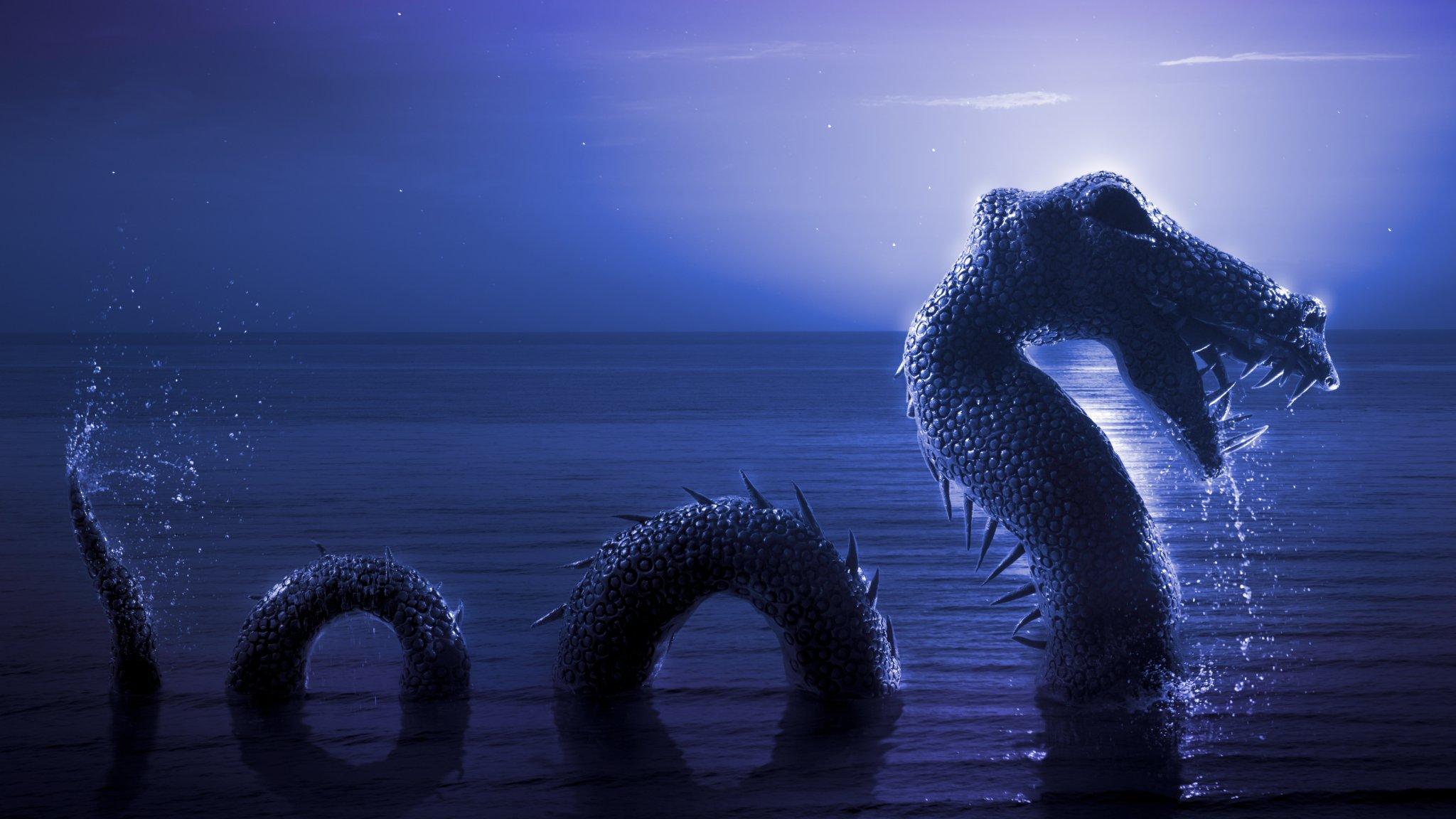
- Published7 February 2014

- Published11 October 2012
